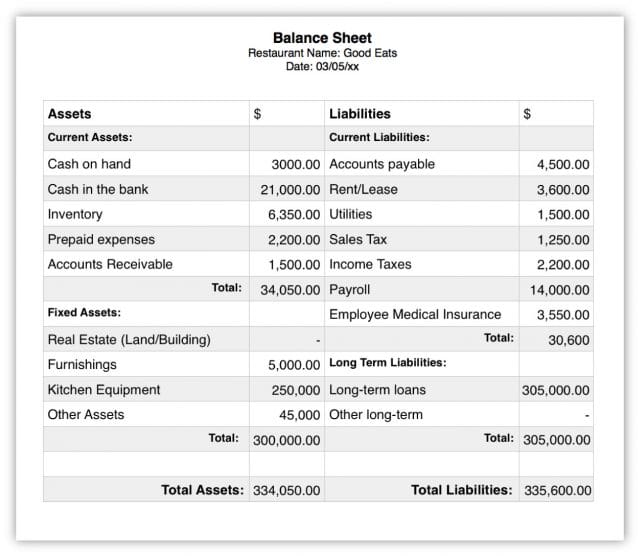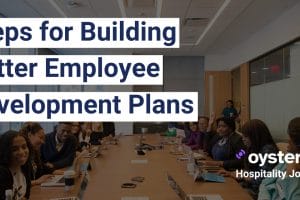Running a restaurant is no easy feat—between rising costs, fierce competition, and shifting customer preferences, staying profitable can feel like an uphill battle. But there’s always a way forward. In this guide, we’ll dive into powerful, proven strategies that can turn your struggling restaurant into a thriving, profitable business.
Understanding Your Restaurant’s Financial Health
Tracking your restaurant’s financial health requires daily attention to specific numbers. A profit and loss statement (P&L) serves as your financial compass, showing exactly where your money comes and goes.

Source: Rezku
Key numbers to track daily
Your daily sales report forms the foundation of financial tracking. This report should include food and beverage sales, labor costs and inventory changes. Additionally, monitoring your prime costs, which combine food and labor expenses, helps maintain profitability since these typically should equal 60% or less of total sales.
Cash flow monitoring proves essential for day-to-day operations. Specifically, tracking your daily operational costs, including utilities and maintenance expenses, helps identify areas where spending might be getting out of hand. Furthermore, inventory management deserves daily attention since restaurants handling fresh ingredients should maintain inventory turnover at less than seven days.
Finding problem areas in your costs
Start by examining your food cost percentage, which should fall between 20% and 40% of your total revenue. Moreover, labor costs require careful scrutiny since a healthy labor cost percentage typically ranges from 20% to 35% of sales.
To identify cost issues effectively, analyze your receiving process for common problems such as incorrect amounts, missed short shipments and wrong pricing. Indeed, veteran managers first locate the most problematic products and then review their lifecycle phases to find mistakes.
Your inventory accuracy also impacts cost control. Watch for data entry errors and unit conversion mistakes when tracking inventory. Consequently, reviewing recipe amounts against actual usage helps ensure your completed recipe counts remain accurate.
Smart Ways to Cut Costs Without Losing Quality
“Having fewer items on the menu is going to save your restaurant money and reduce food waste at the same time” — James Keppy, Corporate chef for Maple Leaf Foods
Menu item cost analysis
Food costs should stay between 15% and 30% of your menu prices for optimal profitability. Start by identifying menu items that cost too much yet sell poorly. These items often drain your resources unnecessarily. Rather than keeping underperforming dishes, replace them with items your customers actually want.
Track your top 10 most-used products daily to maintain tight control over food costs. This practice helps spot discrepancies between your Point of Sale system and actual usage, which could indicate over-portioning or potential theft. Particularly important is implementing portion control measures for expensive ingredients.
Staff scheduling tips
Effective staff scheduling directly impacts your profit margins. Schedule your most experienced team members during peak hours to maximize efficiency. Meanwhile, give every employee, particularly newer staff members, at least one high-revenue shift per week to maintain fairness and motivation.
Avoid scheduling back-to-back closing and opening shifts for the same staff members. This practice affects employee morale and can lead to decreased productivity. Additionally, provide two consecutive days off when possible to help maintain work-life balance and reduce burnout.
Kitchen waste reduction
Restaurants generate approximately 33 billion pounds of food waste annually. Therefore, implementing proper waste management strategies becomes crucial. Pre-consumer waste, accounting for 4% to 10% of restaurant food waste, occurs before food reaches guests. Track this waste through daily logs noting the item, weight and cause of disposal.
Apply the First In, First Out (FIFO) method for inventory management. Label everything with expiration dates and place older products in front for immediate use. Get creative with slightly older ingredients – transform day-old bread into croutons or repurpose unused baked potatoes into breakfast hash.
For every dollar invested in food waste reduction, restaurants typically see an eight-dollar return. Accordingly, train your staff in proper food handling, storage and preparation techniques to minimize spoilage. In fact, implementing robust inventory systems that monitor stock levels in real-time can significantly reduce waste while maintaining food quality.
Setting the Right Menu Prices
Menu pricing directly impacts your restaurant’s profitability. Setting optimal prices requires understanding both food costs and market dynamics.
Food cost percentages
Successful restaurants maintain food costs between 28% and 35% of revenue. Initially, calculate your food cost percentage by dividing the cost of ingredients by the revenue they generate. For instance, if a burger’s ingredients cost $3, and your target food cost percentage is 30%, price it at $10 to maintain profitability.
Different restaurant types require varying food cost percentages. Fine dining establishments often operate with higher percentages, typically 38% to 40%, primarily due to premium ingredients. Quick-service restaurants can maintain lower percentages, around 20%, because of simpler menu items.
Competitor price research
Overall, three main pricing approaches exist based on market research. First, match competitor prices if your restaurant competes through unique brand value. Second, price below competitors if operating a casual dining establishment. Third, set higher prices for upscale restaurants where customers expect premium quality.
Essential factors in competitor research include analyzing similar restaurants in your area. Track prices monthly across multiple locations to understand market trends. Consider tracking up to six competitor brands for comprehensive market insight.
Price adjustments need gradual implementation. Instead of substantial increases, make small changes over time. For example, if data shows your burger price needs a $2 increase, implement it in smaller increments to maintain customer satisfaction.
Remember that casual diners seek value-for-money meals through combo deals and lunch specials. Alternatively, fine dining customers expect higher prices reflecting sophisticated ambiance and premium service. Your pricing strategy must align with your restaurant’s positioning and target market expectations.
Training Staff to Boost Sales
Properly trained restaurant staff directly affects your bottom line. A staggering 70% of restaurant workers never receive customer service training, highlighting a massive opportunity for revenue growth through staff development.
Teaching upselling techniques
Successful upselling starts with thorough menu knowledge. Servers and Bartenders must understand each dish’s ingredients, preparation methods and flavor profiles to make confident recommendations. Role-playing sessions help staff practice upselling in a relaxed setting. Subsequently, they develop their unique style of connecting with guests.
Essential upselling techniques include:
- Suggesting specific wine pairings with meals
- Offering desserts to go for full guests
- Recommending premium ingredients or add-ons
- Presenting slightly more expensive alternatives
Timing proves crucial in upselling. Servers should suggest drinks or appetizers when guests first sit down, primarily because customers are more likely to accept recommendations before viewing the menu.

Customer service best practices
Continuous learning forms the foundation of exceptional service. Monthly or quarterly training sessions keep staff updated on new procedures, menu changes and service techniques. Although online courses and workshops help, hands-on training generally produces better results.
Staff development goes beyond basic service training. Teaching employees to handle difficult situations, manage special requests and understand cultural etiquette enables them to provide personalized experiences. Essentially, this comprehensive approach builds customer trust and encourages repeat visits.
Running sales contests
Sales contests boost both team engagement and revenue. Teams with high engagement show 20% higher sales numbers and 21% more profitability. Nonetheless, contest success depends on choosing the right format and rewards.
Individual contests track personal sales achievements, albeit team contests foster collaboration toward common goals. Setting multiple targets keeps staff motivated to reach higher levels. Gift cards from local restaurants or personalized rewards based on employee interests make meaningful prizes.
Wine-by-the-glass selling contests help educate staff while increasing sales. Suppliers often provide prizes, soon creating win-win situations for restaurants and vendors. Tracking contest results through your POS system allows managers to provide real-time updates, fueling friendly competition among staff members.
Using Technology to Grow Revenue
“We are consumers-on-the-run, the very notion of the family meal as a sit-down occasion is vanishing. Adults and children alike eat on the way to their next activity.”
Online ordering setup
Setting up online ordering requires careful consideration of your restaurant’s needs. Primarily, you have three options: direct website ordering, third-party apps or an integrated system. Direct website ordering allows you to keep more profits as opposed to sharing revenue with third-party platforms.
Third-party platforms charge transaction fees ranging from 10% to 40%, yet they bring substantial customer traffic. Above all, research shows restaurants using these platforms grow revenue by 30% on average. In light of this, many establishments opt for a combined approach, using both direct ordering and third-party services to maximize reach.
Your online menu presentation plays a crucial role in success. Digital menus enable real-time updates, allowing quick adjustments to pricing and availability. Important to realize, customers spend up to 20% more on online orders, making proper menu optimization essential for revenue growth.
Table management systems
A robust table management system streamlines operations and maximizes seating capacity. These systems offer several key features:
- Real-time table tracking
- Customizable floor plans
- Guest flow optimization
- Reservation integration
- Performance analytics
In essence, proper table management increases table turnover without compromising guest experience. The system helps reduce wait times and optimize seating arrangements, given that efficient table allocation directly impacts revenue.
Advanced table management platforms now integrate with guest CRM systems, enabling personalized service based on customer history. This integration helps track guest preferences and dining patterns, creating opportunities for targeted marketing and enhanced customer satisfaction.
Data analytics from these systems provide valuable insights for decision-making. By tracking table utilization patterns and peak hours, managers can make informed choices about staffing and seating strategies. In similar fashion, the system’s reporting capabilities help identify trends in customer behavior and operational efficiency.
Conclusion
Remember that sustainable growth comes from balancing cost-cutting measures with maintaining quality. Through careful menu engineering, proper staff scheduling and waste reduction strategies, you can build a thriving restaurant business that keeps customers coming back. Start implementing these proven strategies today, and watch your restaurant transform from struggling to profitable.
How To Increase Restaurant Revenue: FAQ
You can boost revenue by analyzing menu item costs, optimizing staff scheduling and reducing kitchen waste. Implement portion control for expensive ingredients, schedule experienced staff during peak hours, and use the FIFO method for inventory management.
Train your staff in upselling techniques, customer service best practices, and run sales contests. Teach servers about menu items and flavor profiles, conduct role-playing sessions for upselling practice and organize monthly training sessions to keep staff updated on procedures and menu changes.
Technology plays a crucial role in increasing restaurant revenue. Implementing online ordering systems can boost revenue by 11% to 20%. Table management systems help optimize seating capacity and increase table turnover.
When setting menu prices, consider your food cost percentages and conduct competitor price research. Aim to keep food costs between 28% and 35% of revenue for most restaurants. Research similar establishments in your area and adjust prices gradually.
Focus on marketing strategies such as partnering with local food bloggers, leveraging social media and optimizing your Google business page. Consider hosting special events, implementing a loyalty program and ensuring your online presence accurately reflects your restaurant’s offerings.

Written by Lidija Misic
Lidija holds a BA in English Language and has lived in five different countries, where she has worked in various roles, including as a flight attendant, teacher, writer and recruiter. Her biggest passion is crafting great content and reading. She is particularly passionate about creating punchy copy that inspires people to make positive changes in their lives.

Reviewed by Marcy Miniano
Marcy is an editor and writer with a background in public relations and brand marketing. Throughout her nearly decade-long career, she has honed her skills in crafting content and helping build brands across various industries — including restaurant and hospitality, travel, tech, fashion and entertainment.




